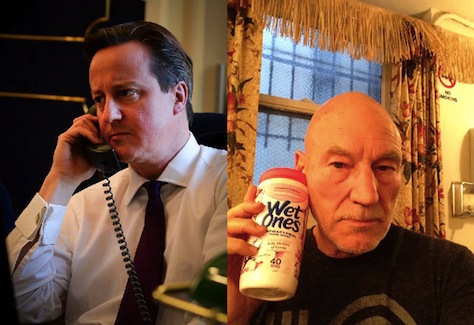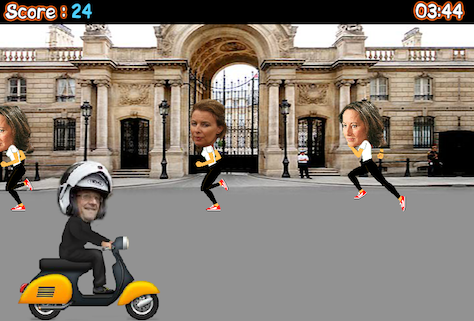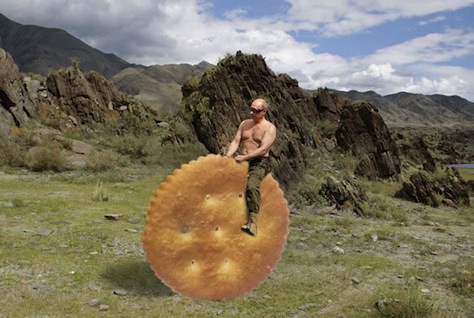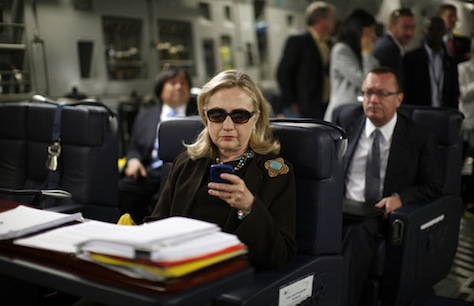If you woke up this morning to the ‘leader of the free world’ doing an interview with Zach Galifianakis, immediately scratched your head and wondered whether you could be trusted to read anything before coffee, you weren’t alone.![]()
![]()
![]()
When I first saw it, I thought it was a joke — surely this was Galifianakis somehow video-shopping the president of the United States into a forum that’s otherwise reserved for the likes of spanking Justin Bieber.
But no — and after a couple of sober, caffeinated views, I realized that this was for real. So no matter what else was going on with your day today, in world or US politics, it was The Day That Barack Obama Turned Up On ‘Between Two Ferns.’ It dominated the US news cycle — even Jonathan Chait wrote about it!
If you’ve somehow not seen the clip, it’s more required viewing than the State of the Union address (and in all fairness, it’s at least 50% commercial advertisement for young uninsured Americans to sign up for Obamacare at healthcare.gov):
It follows the Twitter-jacking of a ‘serious’ Tweet last week from British prime minister David Cameron, who Tweeted a photo of himself telephoning Obama over the ongoing Ukrainian political crisis.
Almost immediately, a handful of celebrities mocked the photo, including, quite memorably, actor Patrick Stewart:
It also follows last month’s devastating coverage of French president François Hollande’s break-up with first flame Valerie Trierweiler, and the news that Hollande had slipped away from the Élysée Palace via scooter to pursue a love affair with actress Julie Gayet. Instead of refocusing the administration of the least popular president in the history of France’s Fifth Republic, a president who once promised that he was a ‘Mr. Normal,’ who love life wouldn’t dominate headlines, Hollande’s love life has dominated headlines. It all culminated in a hilarious online video game whereby each player tries to guide Hollande on a scooter around Trierweiler, former partner Ségolène Royal and the media in order to make it to his tryst:
It’s not a surprise that all three online ‘events’ have gone viral in the past two months. It’s also not a surprise that I found out about each online ‘event’ almost immediately, in real time and via social media outlets rather than through traditional media.
What’s news in 2014 is what shows up in your friends’ Tumblr accounts, on your Facebook feed and on your Twitter stream.
Of the three world leaders, it’s clear that Obama understands most clearly the power of social media to amplify a political message, rather than Cameron and Hollande, who haven’t quite yet figured out how to harness the viral social media phenomena in their favor.
Even if you think Obama’s tun on ‘Between Two Ferns’ was a bit odd for a sitting US president (and you probably do if, like me, you’re even just a little over 30 years old), there’s no disputing that the online stunt dominated the media conversation in US politics today — much more so than if Obama made a speech on live television or even tried to hold a primetime Oval Office address. It’s not the first time that the Obama administration has successfully created a social media sensation.
This is the future of political communication in mature democracies in the developed world. In the same way that Bill Clinton in 1992 and Tony Blair in 1997 managed to ‘win’ the 24-hour news cycles that characterized state-of-the-art political communication of the 1990s, and in the same way that George W. Bush in the 2000s and Obama in 2008 and 2012 dominated Internet-based fundraising and the database-fueled microtargeting involved in get-out-the-vote efforts among their respective bases, the future of communicating campaign messages will involve transcending traditional media — whether the mainstream, left-leaning or right-leaning media — and tapping into the direct source of news for so many voters today, especially young voters: Facebook, Tumblr and Twitter.
Politicians are unable to break through for the same reason that traditional, thoughtful news analysis has such a hard time breaking through Buzzfeed quizzes and other Internet fluff — cute kittens and click-bait just draws a lot more interest on Facebook and other social media than an eight-point plan to advance the cause of US immigration reform. For the mainstream media, that means finding a way to make policy and political news perhaps more accessible. But for political campaigns, it’s become vital that they can communicate in the language of viral political memes. Nothing hits the mark more than Obama’s interview with Galifianakis. If you can’t beat ’em, join ’em.
Maybe there’s a lesson here for the less democratic world, too. Kim Jong-un, fresh off a 100% electoral victory in North Korea has his own internationally recognized meme in the ‘Kim Jong-un Looking at Things’ genre. And who can forget the instant YouTube classic of ‘Putin on the Ritz’?
So listen up, Chris Christie. And Ed Miliband. And Nicolas Sarkozy. If you want to place bets on who’s going to win the 2015 parliamentary elections in the United Kingdom, the 2016 presidential election in the United States and the 2017 presidential election in France, pay attention to which candidates know how to work with Internet-based, viral memes — and which ones don’t seem to get the joke.
Here’s a hint. Though she’s perhaps the oldest major contender for the 2016 election in the United States, former US secretary of state Hillary Clinton has already proved that she ‘gets it,’ gamely playing along when this Reuters photo took on a viral life of its own:




